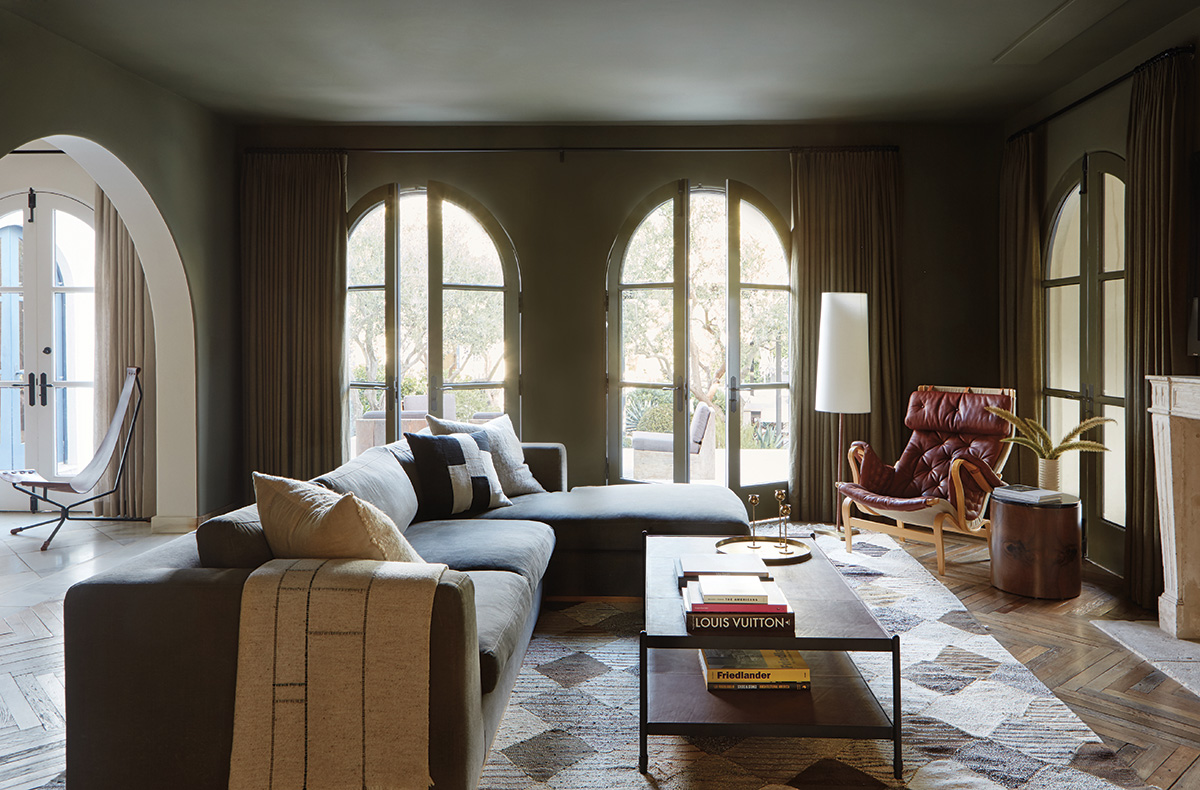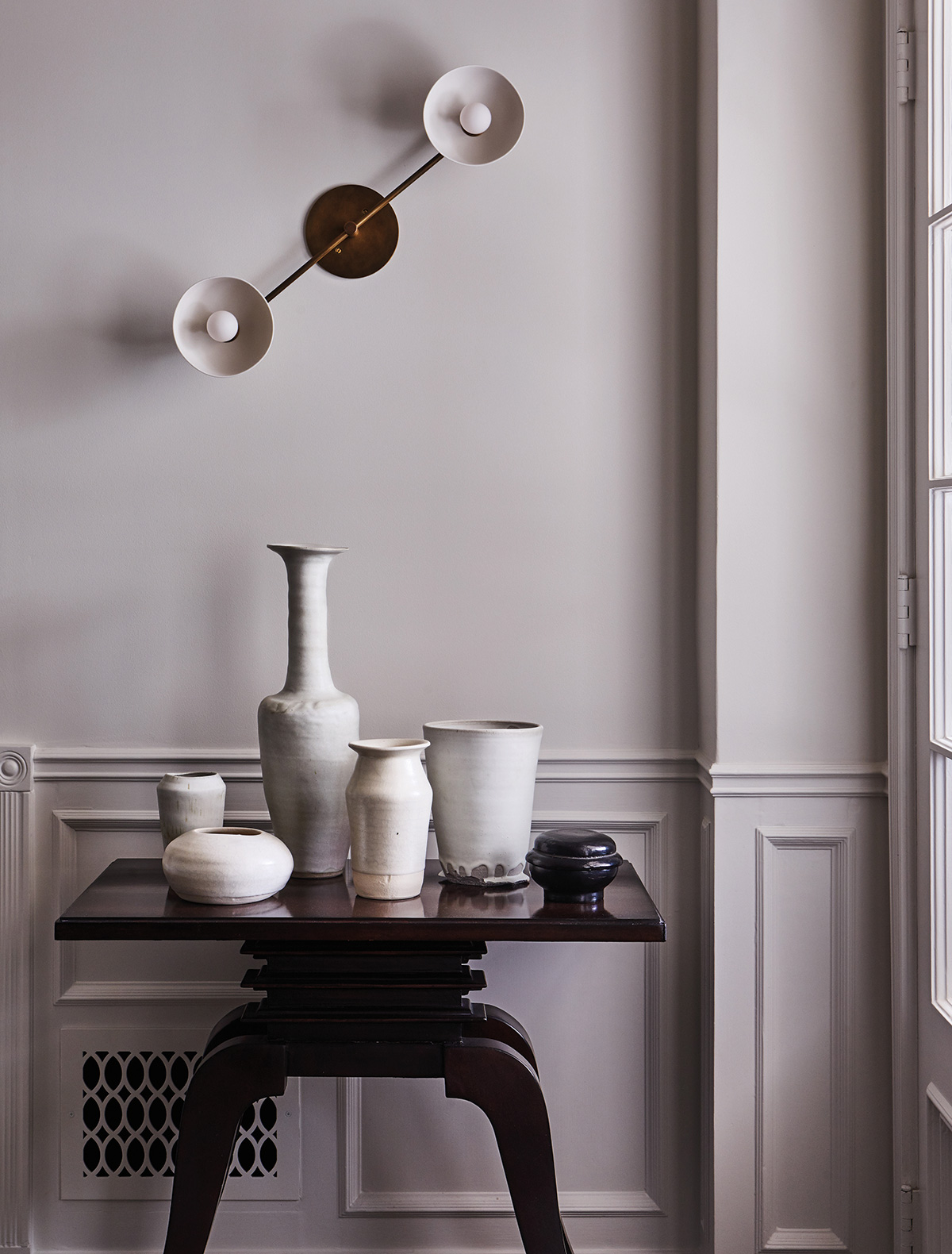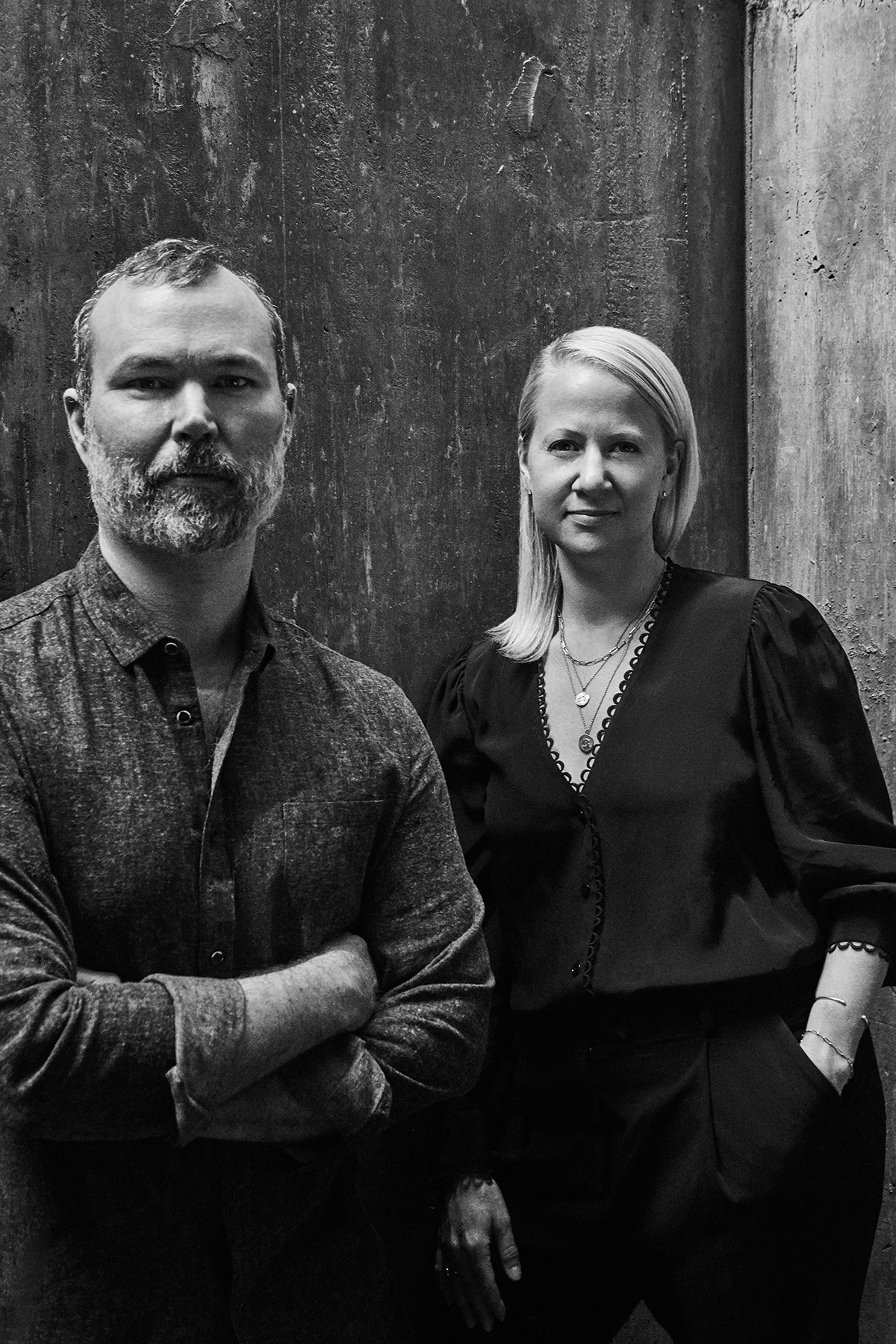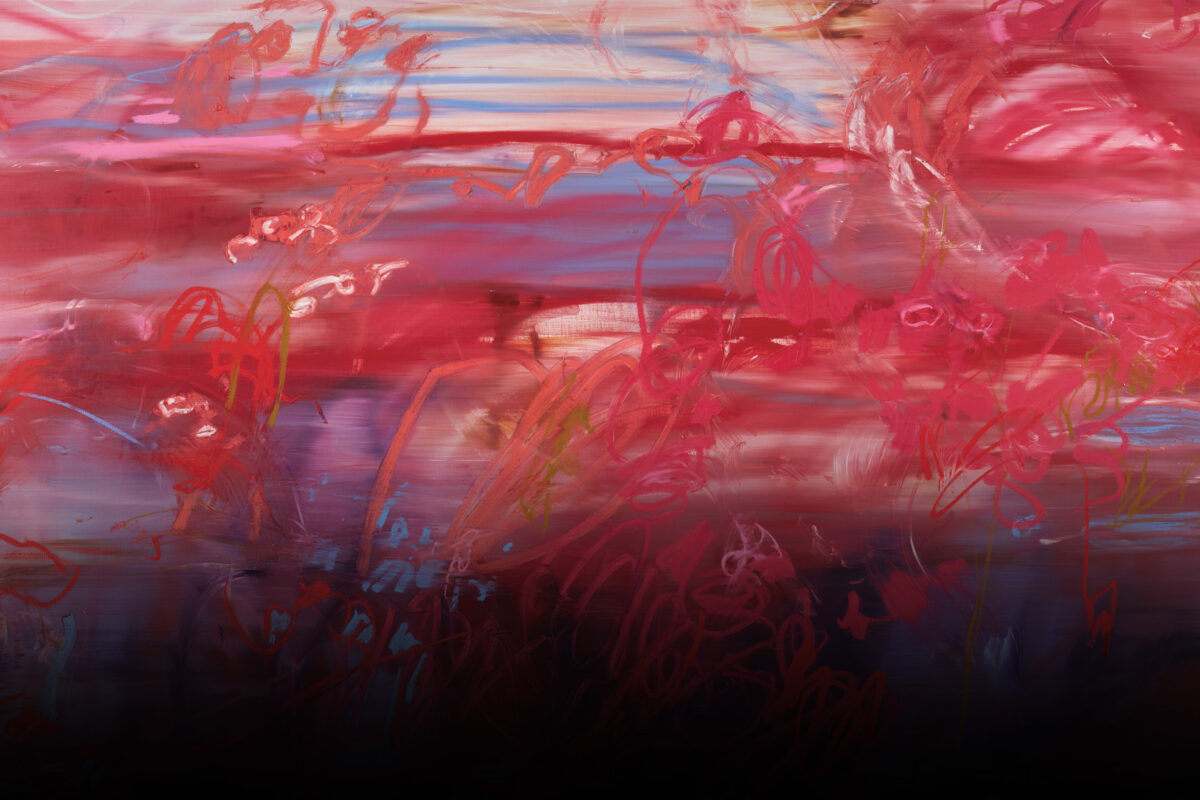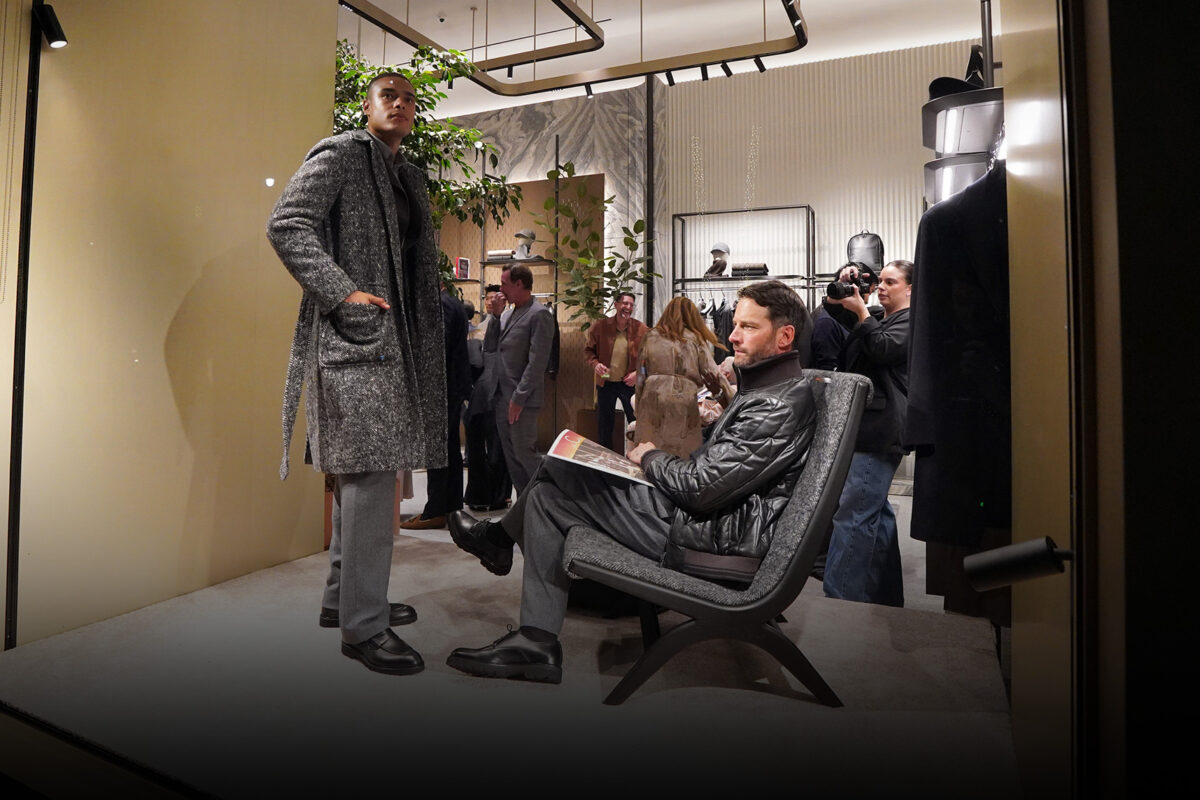How the two friends behind DISC Interiors redefined California decorating
Words by KELSEY McKINNON
A cozy DISC Interiors-designed media room in Hancock Park features tone-on-tone drapery, a vintage rug from Marc Phillips Rugs, a coffee table by Casamidy and Bruno Mathsson’s Pernilla leather lounge chair.
Dramatic storylines are the lifeblood of Los Angeles. But not every storyteller in the city relies on theatrics and fantasy to capture an audience. For the past decade, Krista Schrock and David John Dick, the friends, founders and principal designers behind the lauded firm DISC Interiors, have won the hearts and minds of creative clients — and the design world at large — by doing just the opposite. At their core, they see themselves as visual raconteurs, using finishes and fabrics, objects and textures to paint a picture of their clients. “At first, it doesn’t really make sense,” Schrock says. “You see it but it’s kind of a vague idea to the client and it is not fully formed. The more you work at it, develop it and layer it, the better it gets.”
“Not all pieces in a room need to be the star”
DAVID JOHN DICK
This spring, to commemorate 10 years since the launch of their firm, they are sharing the story of their own evolution in a debut tome, DISC Interiors: Portraits of Home (Rizzoli New York, $65). It’s the tale of a slow burn — there are celebrity clients (it is Hollywood, after all), but no big breaks; instead, their success came from steady growth via word of mouth and a purity of vision. The pages constitute a visual diary of 10 projects across Los Angeles, from a Hollywood Tudor to a traditional Spanish perched above the Silver Lake Reservoir. There are through lines connecting the projects, from an abundance of Belgian linen window treatments and sofas, white-oak cabinetry and furnishings, bold marble and zellige tile, to a general modernist bent. Schrock and Dick have an aversion to glossy finishes, busy patterns and pieces that are too precious — indeed, there’s nary a bright white couch to be found — but the true hallmark of each project is a shared sense of realness. “Rooms that feel overdesigned and trying too hard feel inauthentic to me,” Dick says. In these projects, earthy palettes and rich textures mix with furnishings that proudly bear the passage of time. “Design can’t be just about what looks good in a photograph,” he says.
The entryway of a traditional 1930s Holmby Hills house is a vision of calm thanks to a collection of vases by Emilie Halpern, a sconce by Apparatus Studio and a vintage table.
Like all great storytellers, Schrock and Dick have developed an uncanny ability to edit. In Hancock Park, a French Provincial-style manse (by the trailblazing architect Paul R. Williams) juxtaposes traditional dentil molding and herringbone parquetry with a vibrant contemporary art collection. A few blocks away, an exquisite Spanish-style home was modeled after a European country house. In Holmby Hills, there’s a family-friendly take on a 1930s colonial and a concrete, glass and steel contemporary in Rustic Canyon. A modern traditional farmhouse in Brentwood — the kind that are so pervasive on L.A.’s Westside of late — is injected with well-worn rugs and vintage lighting fixtures to give it a sense of soul. And in Miracle Mile, to hide an unsightly view of the neighbor’s house, the pair designed a stained-glass window inspired by Frank Lloyd Wright and antique Italian glasswork. “Necessity breeds invention, even in interior design,” writes Dick. Indeed, each page is the sum of its many parts. “Not all pieces in a room need to be the star, and by that I mean selecting pieces for a home is sometimes like selecting the cast of a film,” he says. “There are leading roles and supporting roles. I am always telling clients that not every piece in a room needs to be a star!”
An emerald green Zellige tile backsplash with sconces from URBAN ELECTRIC and an integrated stone sink make a statement in a Mid-City powder room.
The behind-the-scenes work takes place at the DISC office in Silver Lake, nestled into a green hill — a second home where their team of five operates out of an industrial space designed by architect Wes Jones. The top floor functions as a large design library where wood, textiles, wallpapers and metal samples are arrayed across large wooden conference tables for various projects. Dick and Schrock’s offices occupy the first level, and unlike many design partnerships, they’ve maintained a very close collaborative process since the beginning.
A Mediterranean-style home’s canvas of herringbone floors and hand-finished surfaces blends harmoniously with DISC’s neutral palette of bone, sand, clay, leather and wood.
Schrock, who has a background in graphic design, grew up in western Pennsylvania — “Amish country,” she says — before moving to Los Angeles and cutting her teeth at Nickey Kehoe and with designer Jane Hallworth. Dick, who grew up in Tennessee, hadn’t considered a career in interior design until his mid-30s. He studied glassblowing, psychology, even spent a few years in the wine industry, before enrolling in UCLA’s interior-design program. The pair met through an industry connection — Dick was also doing some freelance design writing, and Schrock at the time had recently launched an interiors magazine — and they instantly clicked. “I used to find it odd that we have a certain sense of designer ESP that happens, but now I find it comforting. And we respect each other. We’ve created a circle that, I think, allows us both to feel very creative. We rarely disagree inside the circle,” Dick says.
David John Dick and Krista Schrock, founders and principal designers of DISC Interiors.
The pair insist on keeping their office small, only taking on about 10 projects a year, so that they can maintain a close connection to their clients. But they are expanding in different ways. In 2017, they debuted their in-house line of furniture that appears throughout the book — their affinity for designing serene bedroom spaces is evidenced by the fact that they’ve designed no fewer than nine nightstands in their small collection, in addition to ottomans and swivel chairs. They are currently working on a collection with Lawson-Fenning (the pair decorated Glenn Lawson’s Los Feliz home in the early days of their partnership) that will launch this year, along with a follow-up rug collection for Marc Phillips. Recent projects have also taken them beyond California’s borders, including Nashville and Colorado. While this leg of the journey has been recorded, the story is far from over. “Our goal as a firm I feel hasn’t changed in the past 10 years,” says Schrock. “It simply is to create beautiful homes for our clients, that function and age gracefully.”
Feature image: A record player “nook” in the living room of a 1930s Paul R. Williams house in Hancock Park features a Robert James Collection cabinet, a vintage chair from Denmark 50 and mirrors from DDC.
This story originally appeared in the Spring 2021 issue of C Magazine.
Discover more DESIGN news.


